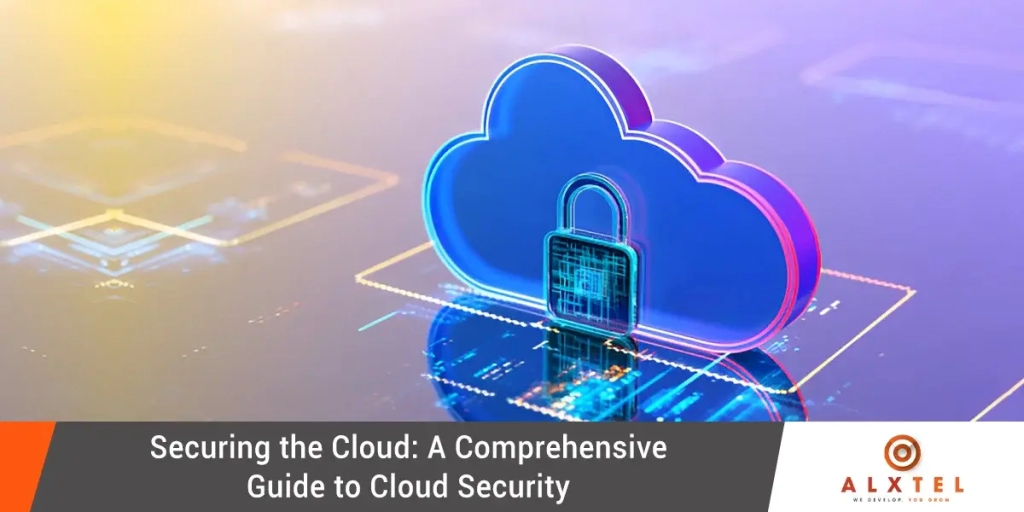Table Of Content
The Growing Importance of Managed IT services within the Modern IT Environment
IT businesses are always under compulsion to be one step ahead. As technology keeps on changing, it requires an efficient, scalable, and secure IT solution to tackle challenges. The strategic way to handle IT so that companies have the assurance of operation smoothness, security, and minimal downtime. For companies looking to thrive in such an ever-changing environment, benefits of managed IT services overcome complex IT demands.
For a growing business, the infrastructure soon outpaces the capability of in-house support. What may have barely worked for a small, low-infrastructure company quickly turns out to be quite limiting as an organization scales up. Managed IT services bridge that gap and offer proactive, strategic, and comprehensive solutions that help the business evolve. Further below, we will discuss benefits of managed IT services, how they solve some of the most challenging IT problems, and how a move to managed IT services model presents benefits.
IT Environment is Becoming More Complex
Business growth implies an increased complexity of your IT environment, too. Growth also engenders a number of challenges such as:
Big Amounts of Data: Data is the core of modern businesses, from customer records down to financial transactions. The amount of data generated and processed daily can be overwhelming; this requires robust storage solutions, seamless data transfer processes, and secure backup systems to manage this inflow. Without proper oversight, a business invites data loss, inefficiencies, and operational disruption.
Advanced Cybersecurity Threats: The threats in cybersecurity continue to evolve every day and night. It encompasses high ransomware, phishing attacks, and data breaches, which could further lead to business disruption or loss.Since companies are increasing their dependency on digital platforms, protection for sensitive information is going to be at an all-time high. Therefore, traditional security measures become reactive; they need proactive and continuous monitoring to detect and neutralize a threat before it causes damage. (Florackis, 2023)
Need for Scalable Cloud Infrastructure: Cloud technology has transformed how businesses run, offering unprecedented levels of flexibility and scalability. However, the management of cloud environments, the integration of multifarious services, and ensuring peak performance are specialized fields. In scaling up, businesses need cloud solutions to grow with them and seamless performance in all operational facets.
How companies can reap benefits of managed IT services?
Managed IT services make the management of complex IT environments simpler with proactive monitoring, automated maintenance, and expert support. Businesses achieve a wide range of contemporary technologies without the need for broad in-house IT hires with an MSP. MSPs come with scalable solutions whereby your IT infrastructure scales up, adjusts, and aligns according to business growth, evolving over time.
Compliance and Security Are Growing Concerns
This is one of the largest concerns for businesses in each of the industries. It is be it GDPR of Europe, HIPAA regarding healthcare, or PCI-DSS in terms of the payment security. The list just keeps on going. Non-compliance leads to heavy penalties, lawsuits, and tarnishing reputation.
Challenges of Staying Compliant: Regulations change daily, and businesses must evolve along with them. Compliance means heavy documentation, frequent audits, and strict data protection protocols. For businesses that don’t have dedicated compliance officers, it’s hard to keep pace with the changes.
How Managed IT services Address Compliance
Managed IT services provide specific industry expertise that keeps businesses compliant with relevant regulations. MSPs monitor systems around the clock, auditing them regularly to ensure compliance with updates where necessary. They advise best practices and guide businesses in the right direction through vast regulatory landscapes.
Enhanced Security Measures: In addition, beyond compliance, benefits of managed IT services include protecting sensitive data, encryption, multi-factor authentication, and intrusion of detection systems. Round-the-clock monitoring and incident response teams are also used by MSPs to assist businesses in mitigating security risks and responding quickly against any potential threat. (Kumbakara,2008).
You Need Strategic IT Solutions, Not Reactive Support
Traditional IT support models generally adopt a find-and-fix approach. That is, it waits for something to break before it tries to fix it. While this reactive approach might solve immediate problems, it leaves businesses exposed to recurring problems because it fails to address underlying vulnerabilities. The Problem with Reactive Support: In a wait-and-see approach, IT issues lead to costly downtime, reduced productivity, and frustrated employees. Moreover, this type of approach does not have the strategic vision necessary in aligning technology with long-term business goals.
Proactive Problem Prevention: Managed IT services are all about proactive IT management, locating potential issues, and fixing them before they become major ones. By continuously monitoring, updating systems regularly, and using predictive analytics, MSPs prevent downtime and ensure peak performance.
Strategic IT Planning: Unlike maintenance, benefits of managed IT services incorporate strategic IT planning. In essence, MSPs collaborate closely with a business to create technology roadmaps, thus aligning IT investments with business objectives. This can be thought of as forward-thinking to enable companies to use technology as a growth driver and enhancer of efficiency and competitiveness.
Scalable Solutions: As the growth of a business increases, IT needs increase proportionally. Scalable solutions, like managed IT services, adapt to changes in requirements for seamless expansion without necessarily overhauling infrastructures. Such scalability assures business continuity, thereby enabling the growth of companies without the inhibiting factors of IT.
Benefits of Transition into Managed IT services
The transition brings benefits of managed IT services, accompanied by upper hand that can affect the very core of business profitability.
24/7 Monitoring and Support: The operation and support provided by managed IT services are around the clock, ensuring that IT systems are always up and working. This constant vigil results in reduced downtime, increased security, and higher productivity.
Cost Predictability: The general pricing model for managed IT services is a flat rate. Therefore, businesses can better plan their budgets. This type of predictable cost structure rids businesses of unexpected costs from system failures or emergency repairs.
Access to Latest Tools and Expertise: With an MSP, companies also gain access to up-to-date technologies and a team of expert professionals. This kind of competence is priceless during the application of new solutions, streamlining of existing ones, or keeping abreast of novel tendencies in the industry.
Increased Efficiency with Less Downtime: Through proactive IT management environments, MSPs will significantly help organizations streamline operations for increased efficiency with less time wasted. All these bring in more productivity by staff, better customer service, and increased income. (Oostenbrink, 2015).
How to Transition to benefits of Managed IT Services
Transitioning to managed IT services requires careful planning and execution. Here’s a step-by-step guide that can guarantee ease in shifting and ensure complete success:
1. Evaluate Current IT Needs and Pinpoint Pain Points
First of all, assess your present IT setup, locate inefficiencies, and point out problems that have been consistently emerging. Your current challenges will provide insight into what you need.
2. Research and Select the Right MSP
Choose an MSP that matches your needs and industry imperatives. Look for those providers that can demonstrate a track record, client references, and sector knowledge.
3. Transition Planning
Collaborate in the development of a focused transition plan with the identified MSP. The scope of service, timeline, and mitigation of disruptions to normal operations are core contents this plan should highlight.
4. Gradual Execution of Transition
Consider the phasing of the transition to make it smoother. Start with the non-critical systems, then move to the core business functions. This approach minimizes risks and assures a seamless shift.
5. Always Review and Improve
Managed IT services need to keep pace with your business. Regularly check performance metrics, ask for feedback from your employees, and work together with your MSP to further refine the services as necessary.
A Final Tip
The selection of the correct MSP is critical to success. Look for providers that have a good reputation, deep industry expertise, and a commitment to delivering great service. References from clients and case studies will be able to give good insight into the capabilities and reliability of an MSP.
In conclusion, AlxTel believes that it is only with a managed IT service that a company in this highly complex and turbulent business world can acquire strategic proactive IT solutions, embracing better security, higher productivity, and long-term enterprise growth with benefits of managed IT services.
Frequently Asked Questions:
What are managed IT services? How do they differ from traditional IT support?
The IT responsibility to maintain, monitor, and manage an organization’s infrastructure is outsourced in managed IT services to a third-party provider. Traditionally, IT support has tended to work on a break-fix model (that means fixing problems as they crop up), whereas managed services take a proactive approach by continuously monitoring systems, preventing problems before they arise, and aligning IT strategies with business goals, all for long-term solutions and not temporary ones.
How can managed services help improve cybersecurity for my business?
Managed services significantly increase cybersecurity through multi-layered protection in the form of firewalls, endpoint protection, intrusion detection, and more. MSPs continuously monitor their networks for threats, undertake regular vulnerability assessments, and maintain industry regulations. Its proactive nature not only limits the risk but also creates the opportunity to respond as soon as possible to potential breaches, with minimum damage and downtime that is necessary in today’s evolving cyber threat landscape.
What types of businesses benefit the most from managed IT services?
Benefits of Managed IT services are for all businesses of all sizes and industries, but they are especially effective for small to medium-sized enterprises (SMEs) with limited in-house IT resources. The industries that have complex compliance requirements and are highly dependent on data security include healthcare, finance, retail, and manufacturing. Large enterprises also utilize MSPs to streamline operations, manage multi-cloud
How do managed services help ensure compliance with regulations like GDPR and HIPAA?
Managed IT services providers allow businesses to remain compliant by initiating data protection measures, maintaining regular audits, and making sure IT environments are at par with the latest regulation requirements. They provide specialized industry-specific expertise, provide secure storage and access to data, and deliver documentation that evidences compliance. MSPs are continually monitoring changes to regulations and updating systems on an ongoing basis, keeping the risks of non-compliance penalties low.
How much will it generally cost to switch to managed services and will it be worth the expense?
The cost of managed services depends on the size and complexity of your IT environment, but they typically stick to a predictable flat fee pricing model. That eradicates surprise expenses and yields even better budget control. Costs are often outweighed with the benefits, such as time spent on downtime minimized to zero, security heightened to an optimal level, and improvements in operational efficiency. Such savings over time prevent costs from emergency fixes, benefitting from increased productivity as well as scalability.
Referencing
Florackis, C., Louca, C., Michaely, R., & Weber, M. (2023). Cybersecurity risk. The Review of Financial Studies, 36(1), 351-407.
Kumbakara, N. (2008). Managed IT services: the role of IT standards. Information Management & Computer Security, 16(4), 336-359.
Oostenbrink, J. (2015). Financial impact of downtime decrease and performance increase of IT services (Bachelor’s thesis, University of Twente).
Need support? You are our priority, We’ve got you covered.
Rapid response time to service requests, responding to all customer feedback to get in touch.
Our goal is to supply you with the best possible customer service across all our products and solutions. We look forward to helping you make the most of your AlxTel platform.














